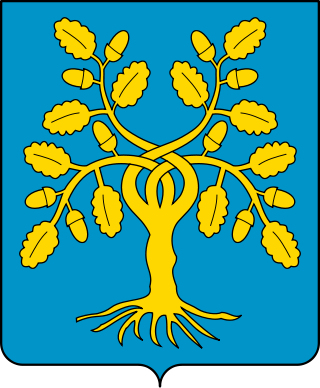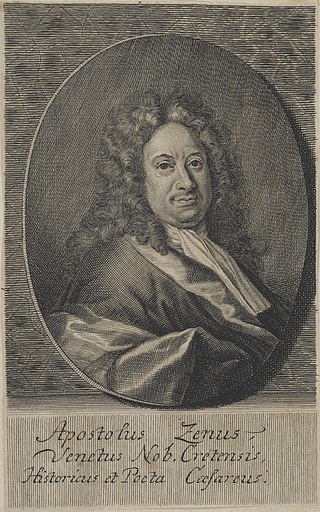Related Research Articles

The House of Della Rovere was a powerful Italian noble family. It had humble origins in Savona, in Liguria, and acquired power and influence through nepotism and ambitious marriages arranged by two Della Rovere popes: Francesco Della Rovere, who ruled as Sixtus IV from 1471 to 1484 and his nephew Giuliano, who became Julius II in 1503. Sixtus IV built the Sistine Chapel, which was named after him. Julius II was patron to Michelangelo, Raphael and many other Renaissance artists and started the modern rebuilt of St. Peter's Basilica. Also the Basilica of San Pietro in Vincoli in Rome was the family church of the Della Rovere. Members of the family were influential in the Church of Rome, and as dukes of Urbino, dukes of Sora and lords of Senigallia; the title of Urbino was extinguished with the death of Francesco Maria II in 1631, and the family died out with the death of his granddaughter Vittoria, Grand Duchess of Tuscany.

The Pazzi were a powerful family in the Republic of Florence. Their main trade during the fifteenth century was banking. In the aftermath of the Pazzi conspiracy in 1478, members of the family were banished from Florence and their property was confiscated; the family name and coat-of-arms were permanently suppressed by order of the Signoria.

Girolamo Tiraboschi S.J. was an Italian literary critic, the first historian of Italian literature.

Girolamo Rainaldi was an Italian architect who worked mainly in a conservative Mannerist style, often with collaborating architects. He was a successful competitor of Bernini. His son, Carlo Rainaldi, became an even more notable, more fully Baroque architect.

Leonardo Agostini was an Italian antiquary of the 17th century, born in Boccheggiano, near Grosseto.

Paolo Paruta was a Venetian historian and statesman.
In textual and classical scholarship, the editio princeps of a work is the first printed edition of the work, that previously had existed only in manuscripts. These had to be copied by hand in order to circulate.

Apostolo Zeno was a Venetian poet, librettist, journalist, and man of letters.

Pietro Paolo Bencini was an Italian Baroque composer and Kapellmeister. He was the father of Antonio Bencini, who was also known as a composer of sacred works.
Marco Antonio Guarini was an Italian historian and scholar, nephew of Giovanni Battista Guarini and author of the Compendio Historico and of the Famiglie illustri della città di Ferrara.

Giovanni Rucellai, known as Giovanni di Bernardo Rucellai, was an Italian humanist, poet, dramatist and man of letters in Renaissance Florence, in Tuscany, Italy. A member of a wealthy family of wool merchants and one of the richest men in Florence, he was cousin to Pope Leo X and linked by marriage to the powerful Strozzi and de' Medici families. He was born in Florence, and died in Rome. He was the son of Bernardo Rucellai (1448–1514) and his wife Nannina de' Medici (1448–1493), and the grandson of Giovanni di Paolo Rucellai (1403–1481). He is now remembered mostly for his poem Le Api, one of the first poems composed in versi sciolti to achieve widespread acclaim.

Sebastiano Biancardi, known by the pseudonym Domenico Lalli, was an Italian poet and librettist. Amongst the many libretti he produced, largely for the opera houses of Venice, were those for Vivaldi's Ottone in villa and Alessandro Scarlatti's Tigrane. A member of the Accademia degli Arcadi, he also wrote under his arcadian name "Ortanio". Lalli was born and raised in Naples as the adopted son of Fulvio Caracciolo but fled the city after being implicated in a bank fraud. After two years wandering about Italy in the company of Emanuele d'Astorga, he settled in Venice in 1710 and worked as the "house poet" of the Grimani family's theatres for the rest of his career. In addition to his stage works, Lalli published several volumes of poetry and a collection of biographies of the kings of Naples. He died in Venice at the age of 62.

Matteo Capcasa was a printer and typographer from Parma, in Emilia in central Italy, which at that time was subject to the Duchy of Milan. He was active as a book printer and typographer in Venice from 1485, when he printed a Vocabularium utriusque iuris and an anonymous Fior di virtù. His workshop was in San Paterniano, where he worked with his brother Giovanni.
Giulietta Pezzi was an Italian writer and journalist whose work included poetry, four novels, and a five-act play. Born and educated in Milan, she was a devoted follower of Mazzini and active in the Italian republican and unification movements. In her later years she wrote for several newspapers and dedicated herself to the establishment of free public schools in Italy based on Mazzini's educational philosophy. She died in the city of her birth at the age of 71. During her lifetime several art songs were dedicated to her, including Bellini's "Vaga luna, che inargenti".

Camillo Tutini was an Italian historian, mainly of the Neapolitan region.

Odoardo Somigli was an Italian admiral during the interwar period and World War II. He was Deputy Chief of Staff of the Royal Italian Navy from August 1939 to December 1940.
Francesco Beretta was an Italian organist, composer and Kapellmeister and a predecessor of Paolo Lorenzani - a pupil of Orazio Benevoli - at the Cappella Giulia of St. Peter.
Adriano Politi was an Italian translator, philologist and classical scholar. He belonged to the Sienese School of philologists.
Antonino Valsecchi, as secolo Antonio Valsecchi and in Latin Antoninus Valsecchius was an Italian Roman Catholic apologist, member of the Dominican order. For thirty years, he was professor of theology at the University of Padua.

Matteo Egizio was an Italian historian, librarian, numismatist and scholar.
References
- ↑ Moss, Joseph William (1825). A manual of classical bibliography. Vol. 2. p. 220.
- ↑ Scifoni, Felice (1849). Dizionario biografico universale. Vol. 5. Florence: Davide Passagli. p. 441.
- ↑ Oratione del r.p. maestro Francesco Turchi da Trivigi, dell'Ordine della Beatissima Vergine Maria del Monte Carmelo, fatta nel capitolo generale dell'isteso ordine: celebrato in Roma, nelle feste delle Pentecoste, dell'anno 1580. Per la creatione del reuerendissimo p. generale, maestro Giovambattista Caffardi da Siena.